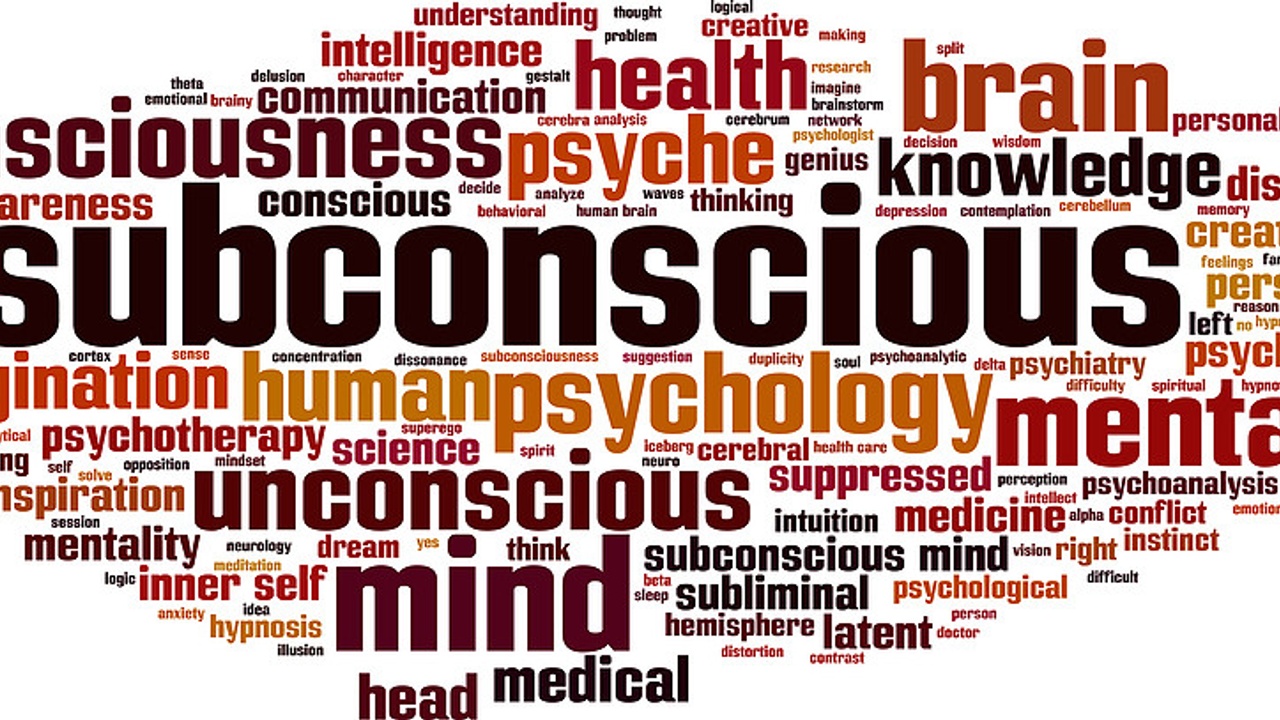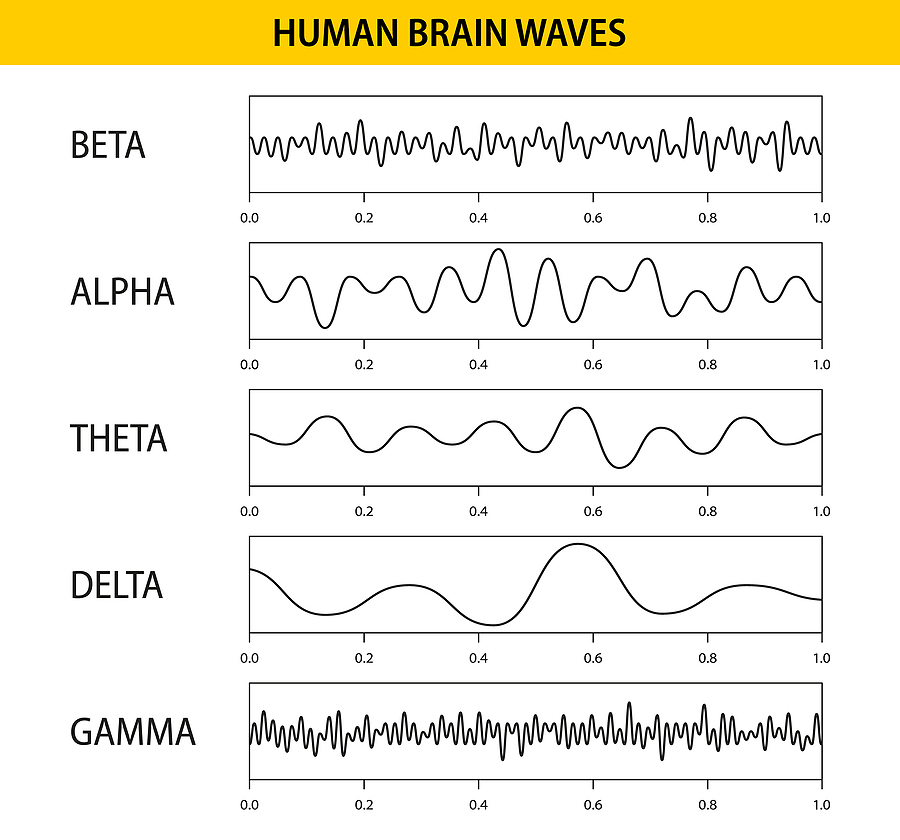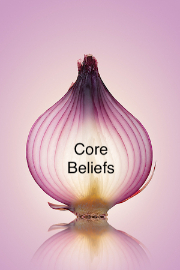Tap Into Your Subconscious Mind to Heal
Oct 14, 2021
 Your subconscious mind directs the actions and behaviors that create the results you experience in your life. Interestingly, your subconscious is more powerful than your conscious mind. It comprises the majority of your mind capacity. As you can see in the iceberg image to the right, the subconscious mind, which is the portion of the iceberg below the surface, is vast. Approximately 90% of your mind capacity resides in the subconscious. By comparison, only 10% of your mind capacity is in the conscious mind, the portion of the iceberg above the water. (Please note that the subconscious mind is often referred to and used interchangeably with the unconscious mind, as is done in the image.)
Your subconscious mind directs the actions and behaviors that create the results you experience in your life. Interestingly, your subconscious is more powerful than your conscious mind. It comprises the majority of your mind capacity. As you can see in the iceberg image to the right, the subconscious mind, which is the portion of the iceberg below the surface, is vast. Approximately 90% of your mind capacity resides in the subconscious. By comparison, only 10% of your mind capacity is in the conscious mind, the portion of the iceberg above the water. (Please note that the subconscious mind is often referred to and used interchangeably with the unconscious mind, as is done in the image.)
Before I continue, I want to give credit to Lisa Smolē at Align Within, whose course I took, Transform Your Limiting Beliefs & Transform Your Life! Learn how to effectively talk to your Subconscious and Superconscious. This blog is a summary of a small portion of the information she shared.
The Nature of the Subconscious Mind
If you look at the image of the iceberg, you’ll see that the surface of the water is a wavy line. This line separates the two portions of the iceberg. Similarly, the mind has two portions. This line, which is part of the conscious mind, acts as a gatekeeper. The gatekeeper decides what information passes from the conscious to the subconscious mind. This line (gatekeeper) is not fully formed until we reach seven years of age. As a result, much of what is stored in our subconscious mind is old! In other words, it was placed there when information freely passed to the subconscious at a very young age.
Unfortunately, much of the early information that is stored in the subconscious mind is negative in nature. Thus, it threatens our safety. This contrasts with one of the key roles of the subconscious mind—keeping us safe. In order to protect us, the subconscious is always alert. It scans our environment for danger while it records and stores relevant information. It actually stores crucial information, such as beliefs, memories, emotions and physiological sensations. All of these are linked together in the subconscious mind. And the mind draws on this stored information in order to help keep us safe while it makes meaning of our world.
In order to explain, let me describe what happens when we have a new experience in our lives. First, our mind refers to the information stored in the subconscious (beliefs, memories, emotions, sensations) that is already known and previously experienced. The mind then uses this information to give this new situation context and to direct our actions. In other words, the subconscious mind creates associations and makes matches. It will compare the new experience to what is stored so that it can find similarities and draw comparisons and conclusions.
Here’s an example. A painful experience becomes tied to a memory and to the subsequent feelings—emotional and physical—that we experienced at the time. Based on this information, we form a belief, which could be positive. However, it’s more likely to be negative. This is called a limiting belief. Expanding on this example, if the pain experience was in your lower back and happened when you were bending forward to pick something off the ground, your mind might form the limiting belief that bending forward causes pain. It might, then, think that this movement is dangerous and thus should be avoided. Likewise, a follow-up limiting belief that your back is fragile and could easily be injured may also develop from the same experience. Therefore, the next time you need to pick something off the ground, your subconscious mind will associate this new experience with the previous painful experience of bending forward. As a result, it’ll probably alter or stop your actions so that you avoid repeating the same movement.
 The Subconscious Mind and Your Health Behaviors
The Subconscious Mind and Your Health Behaviors
What is stored in the subconscious mind can be very powerful. This information, which is hidden from our consciousness, can be the reason we self-sabotage our health goals. To illustrate, consider the person who sets a goal to lose weight but is not successful. This apparent failure may reflect a contradictory subconscious limiting belief s/he holds, such as “losing weight is very hard and not worth the effort” or “extra weight protects me” or “I’m not worthy of being thin.” In addition, s/he may have negative memories, emotions or sensations stored around previous attempts at weight loss. Despite the person's conscious desire to lose weight, this goal is not in sync with what the subconscious stores. Unfortunately, the subconscious always wins. Lisa provides an additional example around emotions, limiting beliefs and weight loss in this blog: Overcome Fear and Reduce Stress to Heal.
This disconnect between the conscious and subconscious minds could also be applied to chronic pain. Perhaps there are limiting beliefs, such as, “pain is expected with age” or “my [fill in the blank with your body part of choice] is weak, fragile, damaged beyond repair” or “arthritis runs in my family” or “cartilage can’t regenerate.” Similar to weight loss, someone might have negative memories, emotions or sensations tied to unsuccessful attempts to alleviate the pain. Hence, we continue to suffer despite our sincere conscious hope for relief.
How Limiting Beliefs are Formed
In a previous blog, Transforming Your Limiting Beliefs, I introduced limiting beliefs and three techniques to uncover and release them. Here, I’d like to go a bit deeper into how we develop these beliefs. Then, I’ll explain one additional technique to release them.
As I stated earlier, many of our limiting beliefs go back to childhood before the age of seven. That’s when we’re forming the gatekeeper. However, we continue to program limiting beliefs as we age. Notice that I used the word program. Beliefs (positive and negative) are like software programs held in our minds. Our brains are the hardware, and we are the programmers. These programs become ingrained and stuck in our subconscious. They will not change until we replace them with another program or belief. The good news is, we can change these programs! I’ll explain more on that later.
Let me elaborate. The programming of limiting beliefs happens through several mechanisms. I am just going to mention a few. First, we are susceptible to programming when we receive information from an authority figure, such as your parents or older family members as a child, doctors or other medical professionals, teachers, clergy, etc. Second, we are more easily programmed in highly emotional situations, especially if we have a highly sensitive personality type. Read the example in the section “Understanding Subconscious Beliefs” in the blog I referred to earlier. Third, programming happens through repetition and what is called the Psychological Law of Repetitive Effect. This is the one I find of most interest and relevance. Thus, I’ll expand on it.
Thoughts vs Beliefs
As you may already know, your thoughts tend to cycle. We all may have 60,000-80,000 thoughts a day, but the majority of them just repeat. Thoughts occur in our conscious mind. They are the mental chatter continuously going on in the background. They are our inner voice. Our thoughts create our stories and our personal narrative. Thoughts are patterns that we repeat over and over again.
On the other hand, beliefs are held in the subconscious mind. While a thought may still be in question and open to analysis, a belief is an accepted truth. Thoughts that are repeated often enough pass through the gatekeeper and become subconscious beliefs. For example, if I regularly repeat to myself that my hip is degenerating and will need to be replaced, this eventually becomes a limiting belief. We might even program simple exclamations like “Ouch” or “my hip hurts” and even audible groans (emotions tied to sensations), such as when getting up or down from a chair, as limiting beliefs, too! Recall that these limiting beliefs remain until we replace them with something else.
As I mentioned, I find this path to creating a limiting belief of most interest and relevance because we have control over it. Unlike the influence of authority figures or highly emotional experiences where we may have no control, we can choose our thoughts, which are still in our conscious mind. Now, I’m not saying it is easy to change your thoughts. Sometimes, it feels like they are a part of us! But I am saying that we do have a choice about them once we are aware of them. A simple way to start is by writing down your thoughts.
Uncover Your Limiting Beliefs
 Once a thought becomes a limiting belief in the subconscious, you need to identify it so you can reprogram it. This is the essential first step! When you are in a trance state, for example, you can access your limiting beliefs in the subconscious mind. We are often in trance states such as when we daydream, meditate or sleep. Reaching a trance state requires shifting our brain waves to a slower rhythm. Rapid beta waves shown at the top of the image are characteristic of the conscious mind. Conversely, you can see the slower alpha and delta brain waves in the middle of the image, which are representative of the subconscious mind.
Once a thought becomes a limiting belief in the subconscious, you need to identify it so you can reprogram it. This is the essential first step! When you are in a trance state, for example, you can access your limiting beliefs in the subconscious mind. We are often in trance states such as when we daydream, meditate or sleep. Reaching a trance state requires shifting our brain waves to a slower rhythm. Rapid beta waves shown at the top of the image are characteristic of the conscious mind. Conversely, you can see the slower alpha and delta brain waves in the middle of the image, which are representative of the subconscious mind.
In her course, Lisa provides additional guidance and tools, including a self-hypnosis audio to help you discover your limiting beliefs. In addition, she also provides free consultations on hypnotherapy to ease any fears you may have and answer your questions about the process. She’ll make you feel safe, comfortable and supported. I’ve worked with her several times and have always found it fascinating. It is good to know more about yourself! Why? Because with this knowledge, you can implement change in your life.
 Reprogram Limiting Beliefs with Affirmations
Reprogram Limiting Beliefs with Affirmations
Once you have determined your limiting beliefs, you can use affirmations to reprogram them. These are short sayings that you repeat on a regular basis. It’s essential to repeat them because the subconscious mind learns through repetition. You might also select images to put up in your environment that represent your affirmations. Finally, the subconscious mind also responds positively to imagery.
Well-written affirmations directly counter your limiting beliefs. This is necessary because the subconscious mind cannot store two opposing beliefs simultaneously. In other words, the subconscious mind cannot hold the limiting belief “my body is broken” AND “my body is healthy and strong” at the same time. It has to pick one. Consequently, the belief that our subconscious keeps is the one that we repeat most often.
 The best way to write affirmations is to focus them on core limiting beliefs. In other words, the limiting beliefs “extra weight protects me” or “I’m not worthy of being thin” are not core limiting beliefs in themselves. However, they do point to the core limiting beliefs of “I’m not safe” and “I’m not worthy.” Let me explain it in a different way. If we think of limiting beliefs as layers of an onion, the core beliefs are in the center. So, we need to reprogram them first. You will be wasting your time repeating affirmations that skip this critical center.
The best way to write affirmations is to focus them on core limiting beliefs. In other words, the limiting beliefs “extra weight protects me” or “I’m not worthy of being thin” are not core limiting beliefs in themselves. However, they do point to the core limiting beliefs of “I’m not safe” and “I’m not worthy.” Let me explain it in a different way. If we think of limiting beliefs as layers of an onion, the core beliefs are in the center. So, we need to reprogram them first. You will be wasting your time repeating affirmations that skip this critical center.
How to write your affirmations
First, relax! The subconscious only responds when you are at ease. Only use words that induce a feeling of comfort, safety, and peace.
Second, use positive, simple words in the present tense. It is okay if you don’t believe it is true yet. A way to ease into it is to add incremental language such as—I am opening to more and more now. As an example, “I am feeling safe (or worthy) more and more now.”
Third, use “I” statements. “I am safe. It is safe for me to lose weight.”
Fourth, avoid negative words such as “don’t” or “not.” The subconscious mind does not process these words and will focus on manifesting the rest of the statement. Instead of “I am not helpless,” which directs the subconscious to make you helpless, use “I am capable.”
And fifth, incorporate imagery and the senses. The subconscious mind likes language such as imagery, creativity, and imagination. It taps into the right side of the brain. “I see (vision) myself feeling (kinesthetic sense) calm (hearing) and safe.”
Conclusion
What lies below the surface of your conscious awareness may be impairing your ability to heal. The beliefs, emotions, memories and sensations stored in your subconscious mind have a powerful effect on your behavior and the results you experience in your life. Once uncovered, you can reprogram your limiting beliefs with well-written and frequently repeated affirmations.
Stay connected with news and updates!
Join our mailing list to receive the latest news and updates from me.
Don't worry, your information will not be shared.
We hate SPAM. We will never sell your information, for any reason.

